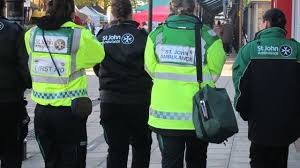 Leading first aid charity St John Ambulance is urging everyone to learn basic first aid skills ahead of Bonfire Night as shocking statistics reveal a third of parents and grandparents have witnessed an injury during bonfire night celebrations and 4,506 people visited A&E from 2014-2015 for treatment of a firework-related injury. This is a huge 111 per cent increase from the 2,141 firework-related injuries reported in 2009-10.
Leading first aid charity St John Ambulance is urging everyone to learn basic first aid skills ahead of Bonfire Night as shocking statistics reveal a third of parents and grandparents have witnessed an injury during bonfire night celebrations and 4,506 people visited A&E from 2014-2015 for treatment of a firework-related injury. This is a huge 111 per cent increase from the 2,141 firework-related injuries reported in 2009-10.
The most common injuries that St John Ambulance volunteers are required to treat at Bonfire Night gatherings are burns, debris in the eye from bonfires and fireworks, and smoke inhalation.
St John Ambulance volunteers will be attending firework events across the country so that anyone who needs first aid gets it quickly. However, injuries are much more likely to occur at private parties, where trained volunteers won’t be on hand to help, highlighting the need for those attending firework events to learn basic first aid to ensure they can be prepared to help in a firework first aid emergency.
Burns or scalds
If someone’s got a burn or scald:
Debris in the eye
If someone’s got something in their eye:
Smoke inhalation
If someone’s inhaled smoke fumes:
For first aid information, visit www.sja.org.uk for more first aid tips. People can also download the free St John Ambulance first aid app (available for iPhone and Android devices). It can be used to provide support while waiting for help to arrive. The app features easily accessible step-by-step information, an intuitive interface and voice prompts for several first aid techniques.